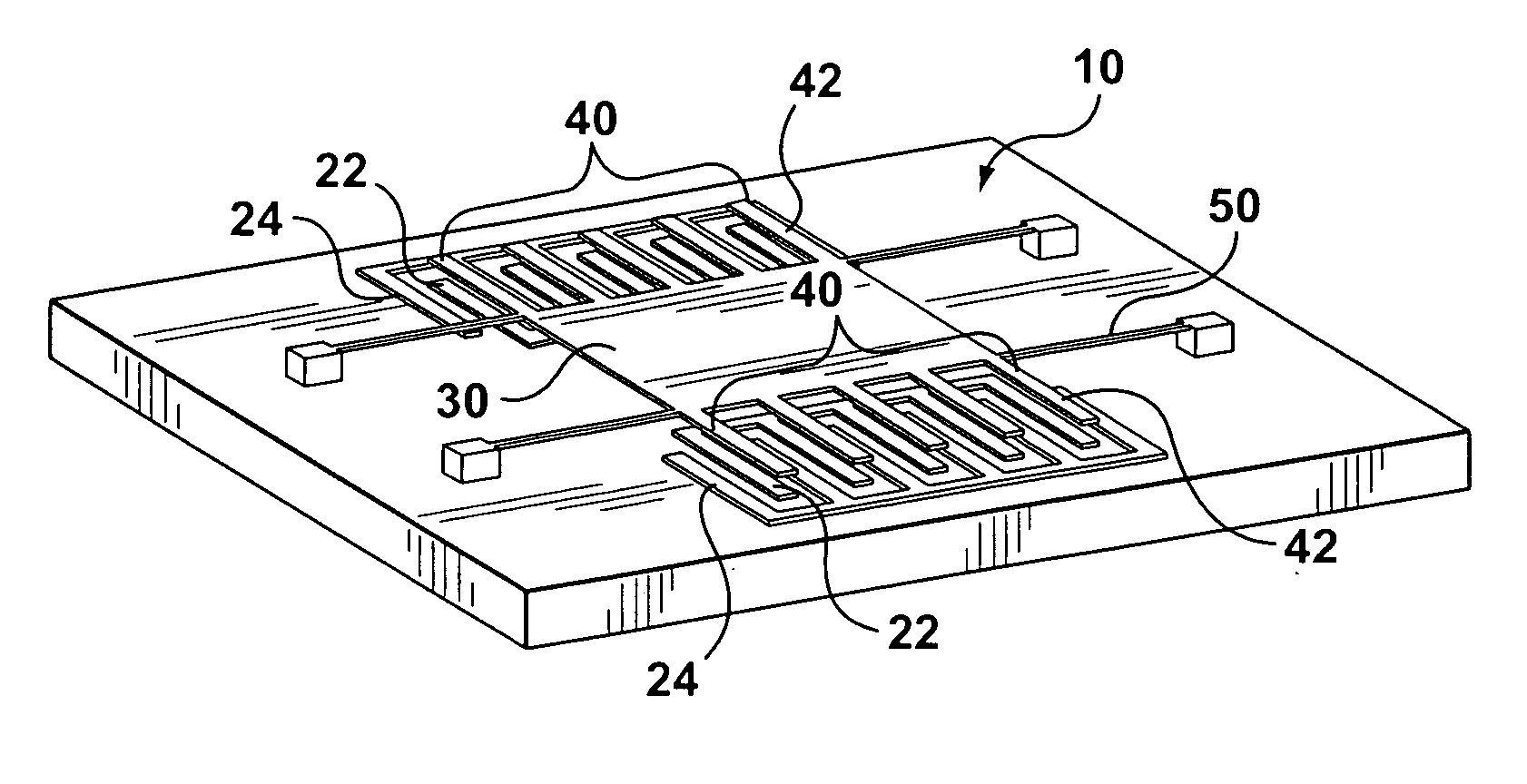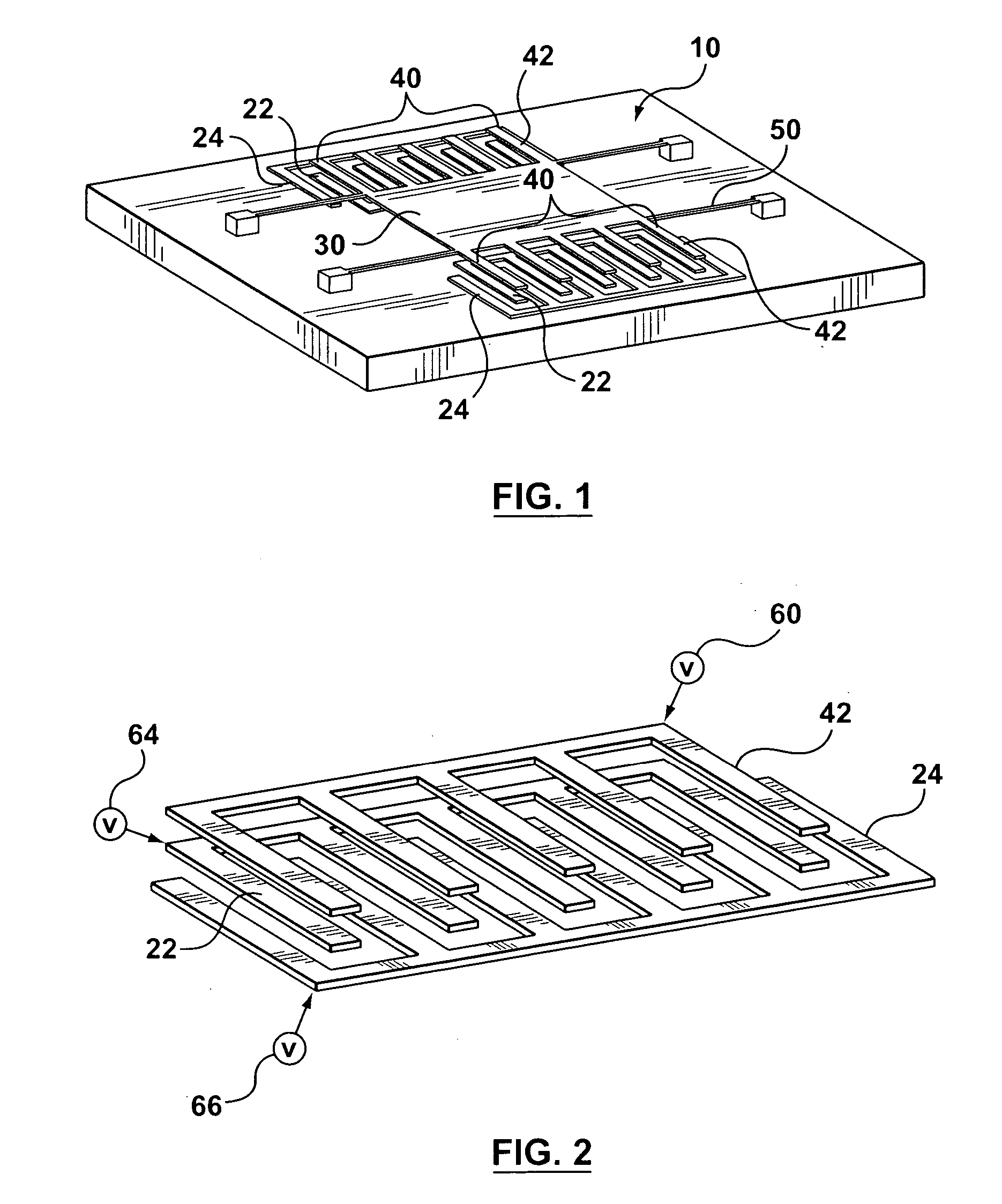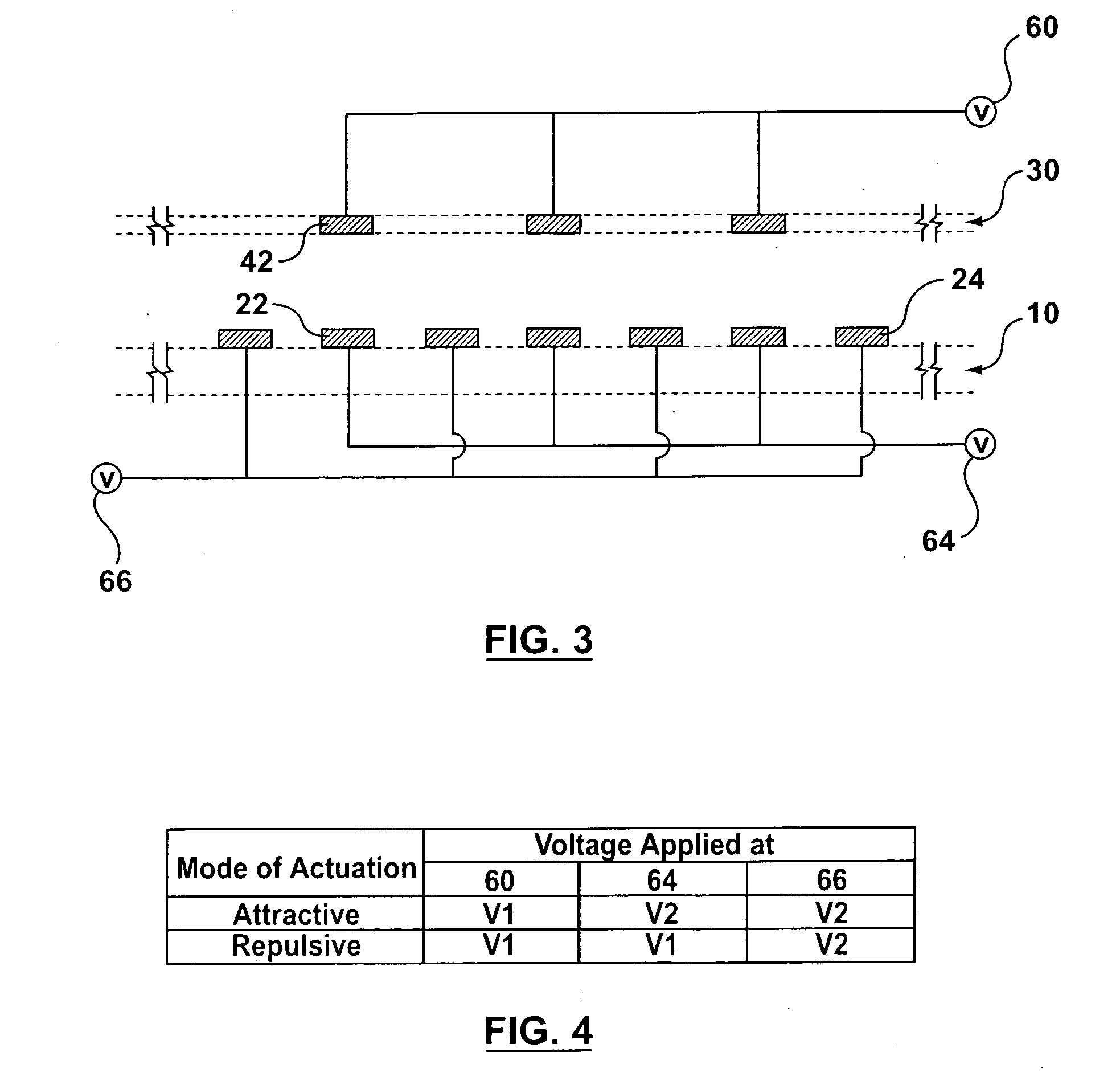Bi-directional actuator utilizing both attractive and repulsive electrostatic forces
- Summary
- Abstract
- Description
- Claims
- Application Information
AI Technical Summary
Benefits of technology
Problems solved by technology
Method used
Image
Examples
example 1
[0077] The bi-directional electrostatic actuator of this example is schematically shown as FIG. 1. FIG. 2 shows part of the electrodes of the actuator shown in FIG. 1—The section view of electrodes is shown as FIG. 3. The width of the moving electrodes 42 and that of the fixed electrodes 22, 24 are not necessarily equal. Normally, the moving electrodes 42 are slightly narrower than the aligned fixed electrodes 22 in order to accommodate for any undesired displacement during operation and for misalignments due to fabrication in the plane parallel to the plane of the electrodes. The minimum number of moving electrodes 42 is 1 and the minimum number of fixed electrodes 22, 24 is 3. There is no limitation on the maximum number of moving and fixed electrodes.
[0078] All the electrodes are made of electrically conductive material. As shown in FIG. 3 all moving electrodes 42 in the actuator are electrically connected to a voltage source 60. Aligned fixed electrodes 22 on the base 10 are el...
example 2
[0090] The bi-directional electrostatic actuator of this example is schematically shown in FIG. 15. FIG. 16 shows part of the electrodes of the actuator shown in FIG. 15. A section view of the electrodes is shown in FIG. 17(a).
[0091] As shown in FIG. 15, the moving electrodes 42 have a set of aligned fixed electrodes 22 on the base 10. The unaligned fixed adjacent electrodes 24 are elevated to the same plane as the moving electrodes 42 by supporting posts 52.
[0092] As shown in FIGS. 16 and 17 (a), all moving electrodes 42 in the actuator are electrically connected to a voltage source 60. Aligned fixed electrodes 22 on the base 10 are electrically connected to voltage source 64. Unaligned fixed adjacent electrodes 24 are connected and subject to voltage source 66.
[0093] The bi-directional electrostatic actuator of this example can work in two modes, i.e., the attractive mode and the repulsive mode. When working in the attractive mode, the electrodes are subject to potentials in th...
PUM
 Login to View More
Login to View More Abstract
Description
Claims
Application Information
 Login to View More
Login to View More - R&D
- Intellectual Property
- Life Sciences
- Materials
- Tech Scout
- Unparalleled Data Quality
- Higher Quality Content
- 60% Fewer Hallucinations
Browse by: Latest US Patents, China's latest patents, Technical Efficacy Thesaurus, Application Domain, Technology Topic, Popular Technical Reports.
© 2025 PatSnap. All rights reserved.Legal|Privacy policy|Modern Slavery Act Transparency Statement|Sitemap|About US| Contact US: help@patsnap.com



